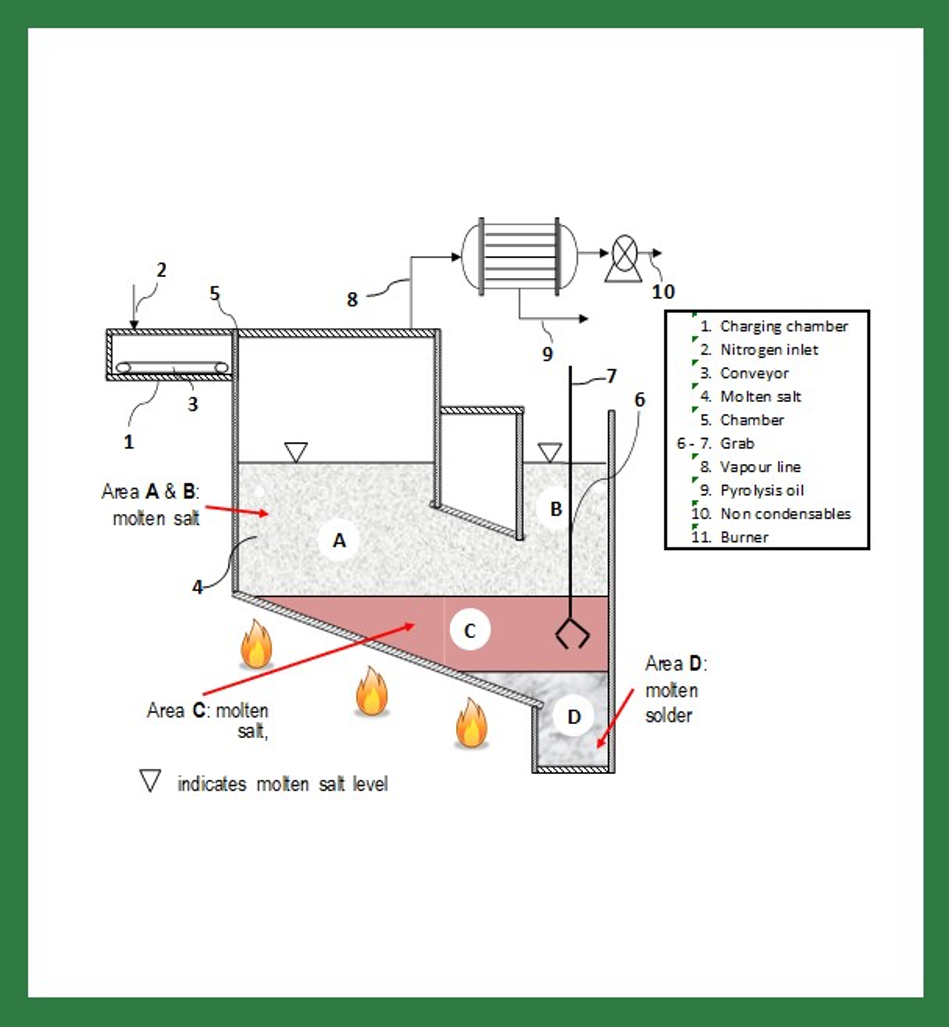About
About ReCEOL
RecEOL provides evidence that a patented recycling process for waste printed circuit board (PCB), LCDs, batteries and automobile shredder residue (ASR) is economically viable and environmentally sustainable. The project brings together industry and academia to solve the challenges of recycling these wastes while realising the business opportunities in recycling.
PCBs are part of the WEEE (Waste Electrical and Electronic Equipment) stream; one of the fastest growing waste streams in the EU. The best way to increase the recycling rate will be to offer a highly profitable process to provide a financial incentive. PCBs are present in most electronic equipment such as televisions, computers or mobile phones. Hence RecEOL has global potential.
RecEOL is applied research. The aim is to show on the pilot plant scale that the scaled-up commercial plant is economic. Hence, RecEOL must establish the metal yields, the kinetics, the mass balances to find the financial performance of a commercial plant.
Advantages
The technology offers many advantages over current technologies:
- Yields: over 95% recycling rate of copper, steel and solder exceeding the current rates of 70-80%. Moreover, aluminium, solder and steel is separated and can be recovered.
- Critical and special metals: for the first time, metals such as indium and tantalum will be recyclable.
- All PCBs: even low value (TVs; low gold content) PCBs.
- No shredding: highly energy efficient process.
- Simple process from established industries: no moving parts, low capital cost.
- Easy scale up: doubling the salt volume, doubles throughput of the continuous process.
The project is an essential step towards the commercial implementation of the RecEOL process.
Outline / Lay Summary
THE RECEOL TECHNOLOGY USES A NUMBER OF PATENTED PROCESSES TO RECYCLE ELECTRONIC WASTES.
RecEOL involves the use of only one single unit for a multiproduct recycling facility.
The waste material is added to molten salt at operating temperatures of 300-450oC. The molten salt separates the metals: liquid solder, e.g., at the bottom of the reactor, while the solid copper floats on the solder making material recovery easy.
As the waste is in direct contact with molten salt, treatment time is as short resulting in the smallest, most cost-effective reactor. Scale-up is also straightforward, i.e., doubling the surface area of the molten material doubles throughput”

